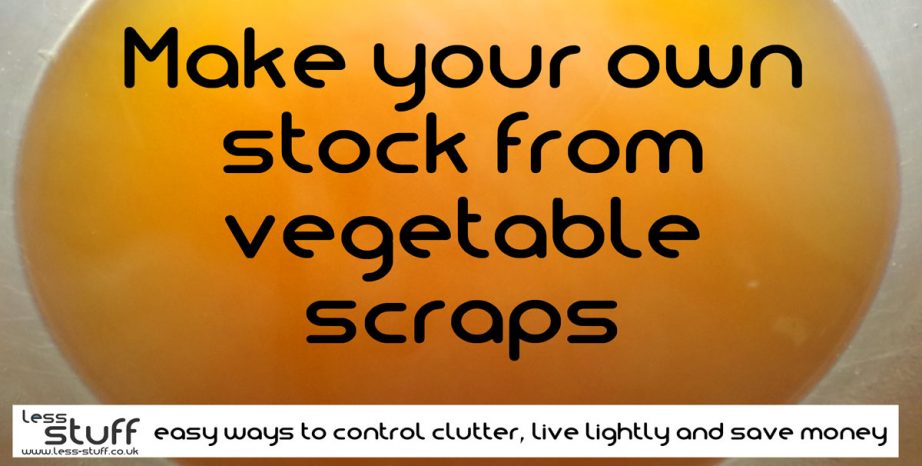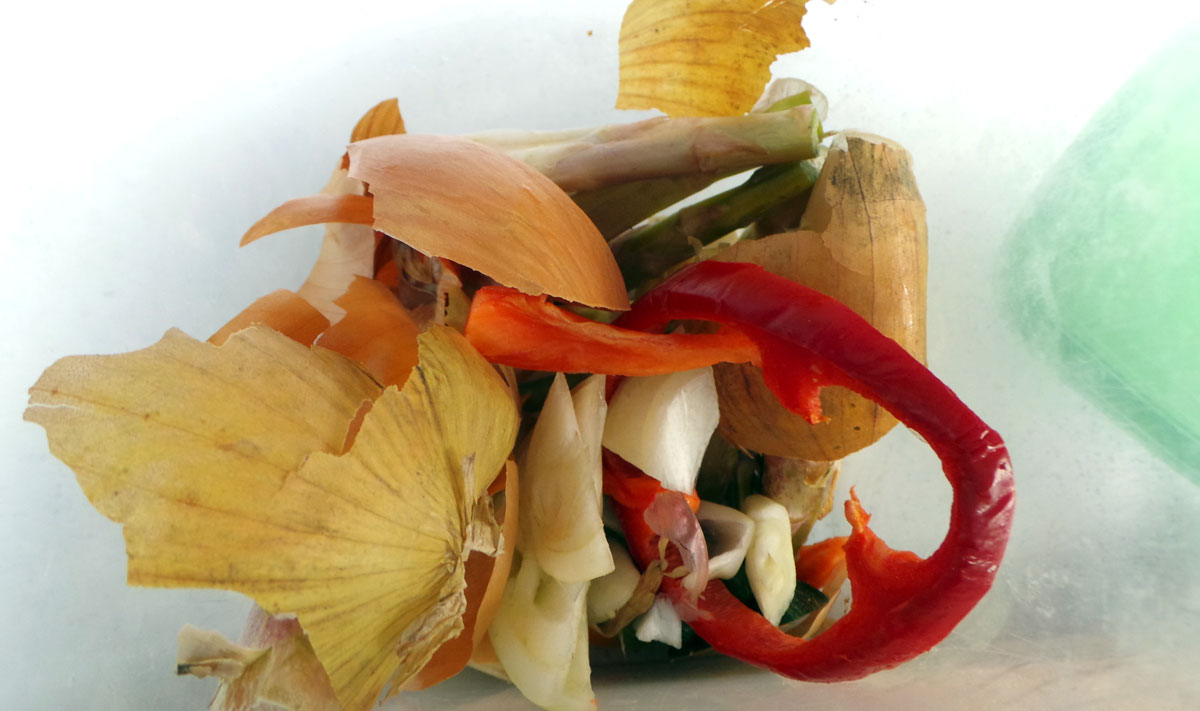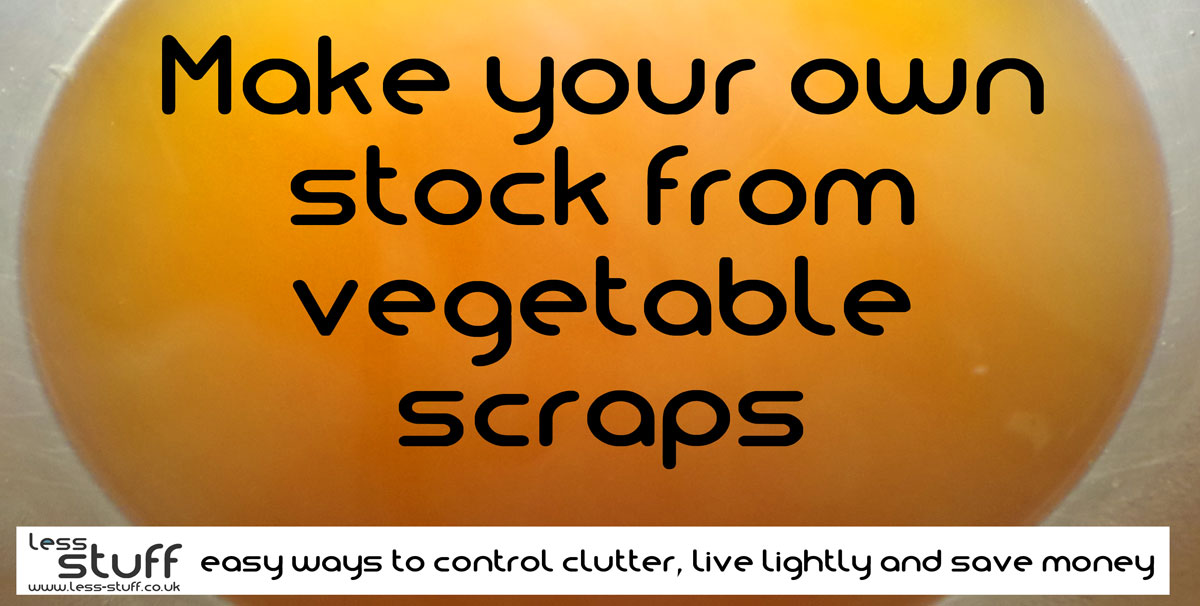
Even if you compost all your food scraps you can get more out of some of them by making stock. It is very easy.
Stock cubes are a store cupboard standard for most people but vegetable stock is so easy to make there is no need to buy them. You can use your home made stock to boil rice, for risotto, to thicken sauces, to poach and for making soup.
Apologies to chefs out there, I appreciate that true stock making is an art in itself and this food saving idea is probably travesty. This ‘recipe’ is for a very basic stock to use when a recipe calls for a stock cube. It gets the last of the flavours out of food destined for the compost.
A classic stock will be started with onions, carrots, celery in a 50/25/25 ratio. The diced up veg are either softened in butter or oil or roasted in a pan with bones. Sometimes other veg are added and the whole thing is gently boiled for 4 to 5 hours. I have a quicker alternative which makes a perfectly usable stock and squeezes just a little big more out of the vegetable scraps.
Get into the habit of saving scraps
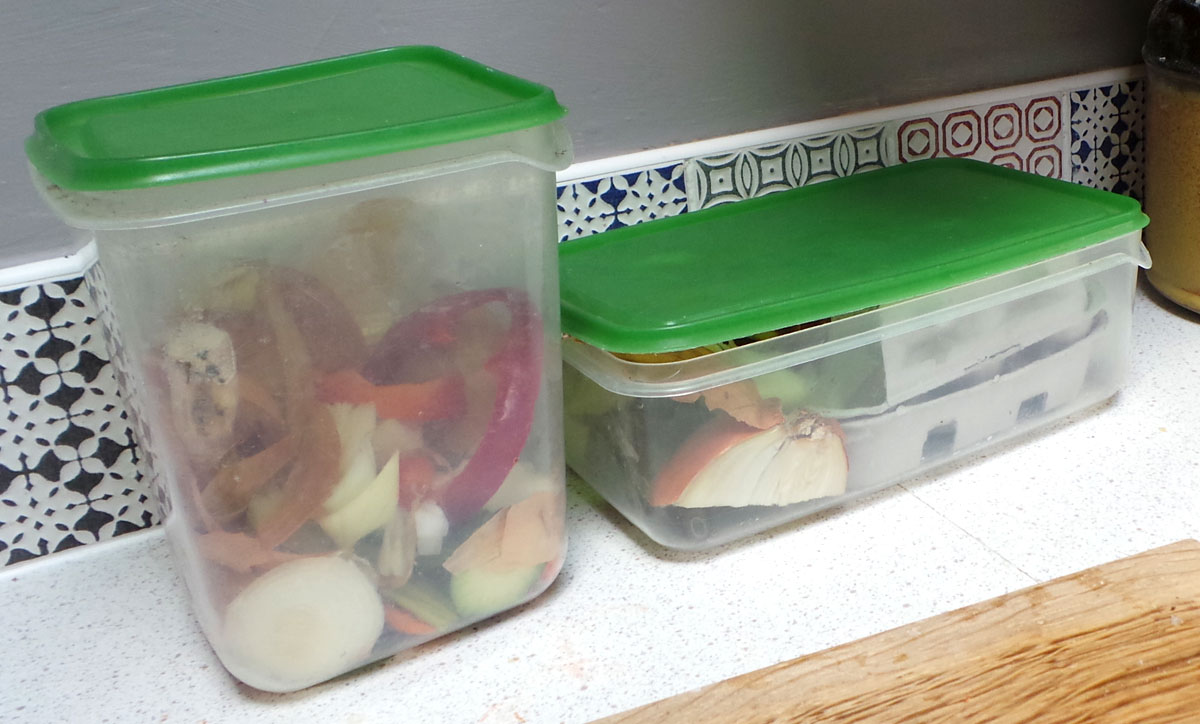 When I’m chopping up veg I have 2 containers on the kitchen surface. One is for scraps destined for the compost bin and the other is for stock. I empty the compost container when it is full. If I’m not going to be making stock for a while I put the stock container with the scraps in the fridge or freezer.
When I’m chopping up veg I have 2 containers on the kitchen surface. One is for scraps destined for the compost bin and the other is for stock. I empty the compost container when it is full. If I’m not going to be making stock for a while I put the stock container with the scraps in the fridge or freezer.
What to put in stock
Most days I cook I use garlic, onions and celery. All the peelings from those go straight into the stock container. You can also add leek ends, carrots (not the tops) and a few potato peelings. Most anything can go into a stock as long as it does not have an overpowering taste. If you have any wine or cider leftover that can be used instead of water.
What to leave out of stock
- Leave out carrot tops (you can make pesto with them instead).
- Don’t use cabbage, cauliflower or broccoli as it will have a bitter taste. You can use the stalks to make a soup afterwards but none of these brassicas respond well to a long cooking process.
- Too much potato or sweet potato will absorb the taste and you might end up with glue because of the potato starch.
- Don’t use food that smells bad or off.
- Beetroot can be used but in moderation, and you will get red stock.
Get the balance right
If you roughly aim for the same quantities in scraps as you would use in a traditional, properly made stock you can’t go far wrong. Proper stock tends to start off with half onion and a quarter carrot and celery.
- 50% made up of onion/garlic/leek scraps
- 50% made up of celery/carrot peelings/squash or pumpkin peel/mushroom ends/pepper scraps/courgette ends
- Use smaller quantities of parsnips unless you want a very sweet stock.
- You can add beet leaves, lettuce and spinach at the end of the cooking process.
How to cook the stock
When you have enough scraps to fill a third of a pot add cold water to cover and bring to a boil. Adding bay leaves or any other herbs like rosemary and thyme will help the taste but there is no need for salt. Simmer gently for an hour or so then strain off the scraps. These can go into the compost now. If you have used onion skins your stock will be a brown colour, this will colour any rice you cook in it, just so you know!
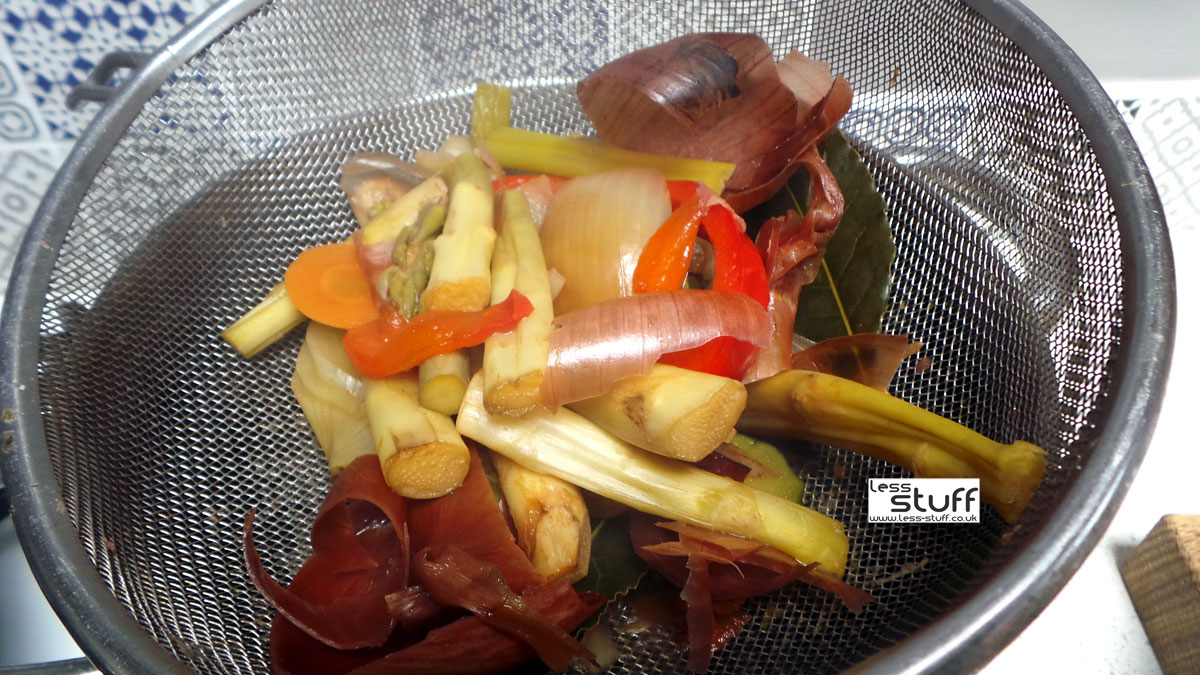
How to store your stock

When your stock is cold you can pour it into ice cube trays to freeze, take them out of the tray when they are solid and move to a zip lock bag in the freezer to save space, and so you can use the ice cube tray again. You can freeze the stock in old yoghurt pots or small tuppaware containers too.
I like to keep my stock in the fridge if I’m not going to use it that day, it keeps for a few days but it comes in handy for almost every meal so it doesn’t last that long in my house.
Variations
If you are a meat or fish eater you can add the bones to the stock but you will need to cook for longer. Meat and fish stock is good to make in the slow cooker because you can just leave it to get on with things. Oily fish tends to result in a greasy stock so it is better to use white fish bones or prawn shells. Chicken leftovers make great stock too. Meat and fish stocks might need you to skim the surface for scummy bits and fat every now and then, it is important to cook on a low heat because a boil would mix up all the nasty bits with the good bits. Once you have strained the meat or fish stock you can put it in the fridge and it will separate into fat and stock. The fat can be used to cook with and the stock as normal.
Do you want more ideas for food saving?
A while ago the less-stuff Facebook group teamed up to make an A-Z of leftover food ideas. You can get it as a PDF for joining the less-stuff mailing list. You also get a free printable decluttering calendar and a voucher for the less-stuff shop.


